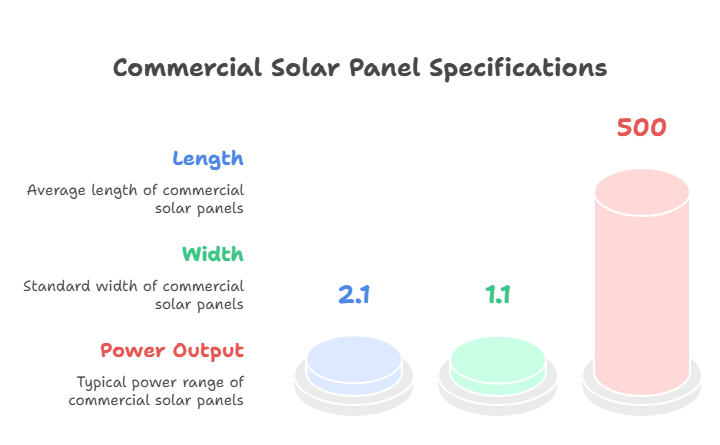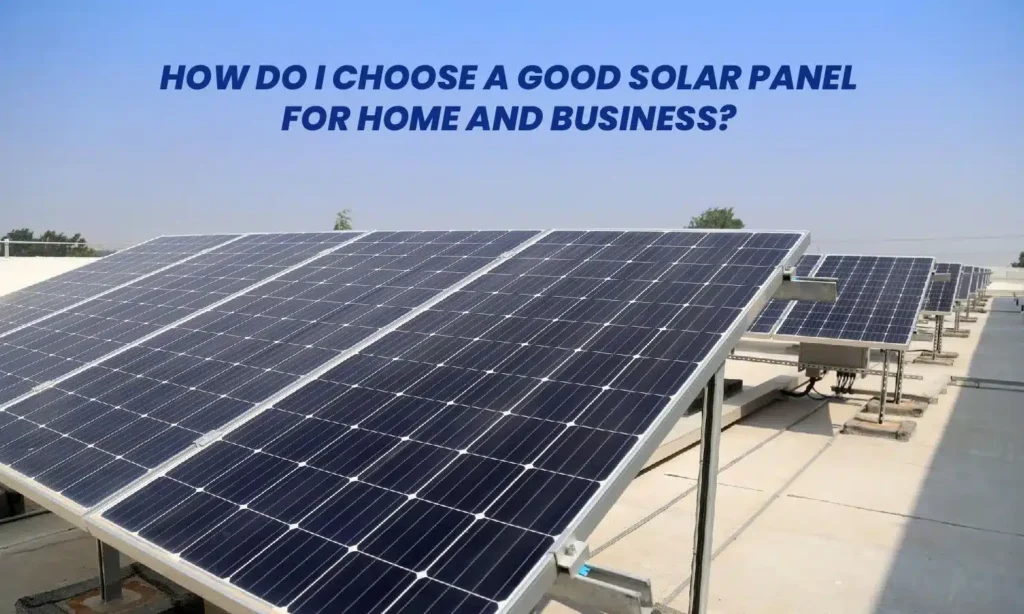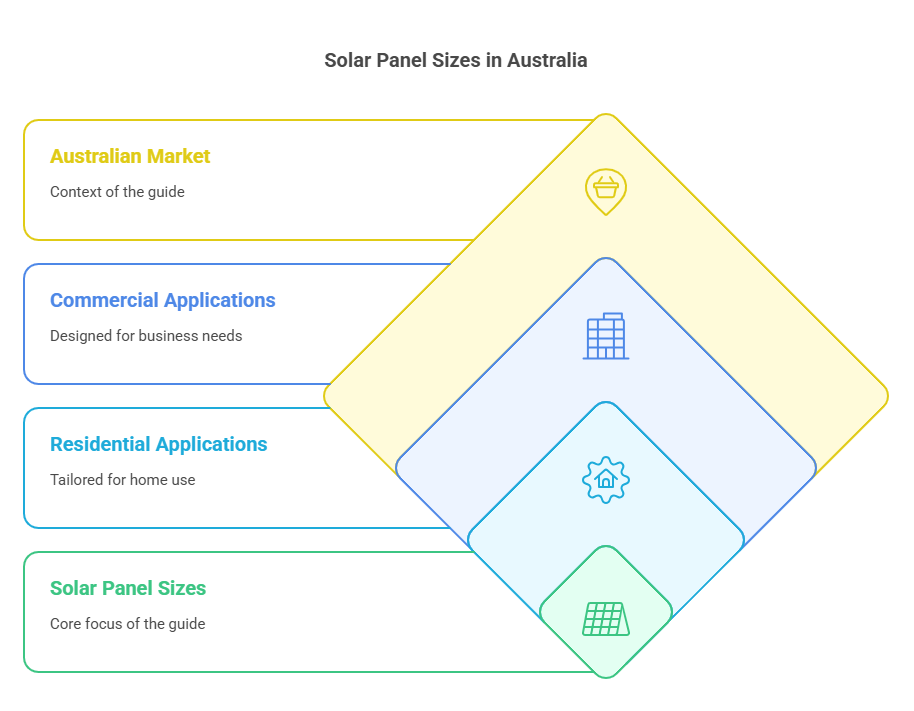Solar energy is rapidly becoming a preferred choice for Australians seeking cleaner and more cost-effective energy solutions. One of the most common queries from homeowners and business owners alike is: “What size solar panels do I need?” In this guide, we explore solar panel sizes, dimensions, and wattage outputs, with a special focus on Australian households and commercial setups. Whether you’re planning a residential rooftop installation in Sydney or a commercial array in Perth, understanding panel sizes is the first step to a successful solar journey.
What Are the Standard Solar Panel Sizes?
Residential Solar Panel Dimensions
In Australia, residential solar panels typically come in the 60-cell variety. These panels usually measure:
- Length: Around 1.7 metres
- Width: Approximately 1.0 metre
- Power Output: 300W to 370W
These panels are best suited for homes with standard rooftop space and are lightweight, making installation easier and more affordable.
Commercial Solar Panel Sizes
Commercial solar panels are usually 72-cell or larger, offering more power and efficiency. Their typical dimensions include:
- Length: About 2.0 to 2.2 metres
- Width: Around 1.1 metres
- Power Output: 400W to 600W+
Because of their size, these panels are ideal for warehouses, factories, or large-scale installations where space is less of a constraint.

Key Factors Influencing Solar Panel Size Selection
1. Energy Needs
Calculate your average daily energy consumption (in kWh) and determine how much of it you want solar to cover. A typical Australian home uses about 15–20 kWh per day.
2. Roof Space Availability
Use available roof area as a constraint to decide how many panels you can fit. For instance:
- A 5kW system needs around 28–32 m² of roof space
- A 10kW system will require about 50–60 m²
3. Panel Efficiency
High-efficiency panels may offer more output per square metre, allowing you to generate more energy from a smaller roof area.
Comparing 60-Cell vs 72-Cell Solar Panels
| Feature | 60-Cell Panels | 72-Cell Panels |
|---|---|---|
| Size (approx) | 1.7m x 1.0m | 2.1m x 1.1m |
| Output | 300W to 370W | 400W to 600W+ |
| Best for | Residential roofs | Commercial spaces |
| Weight | Lighter | Heavier |
| Cost per Watt | Slightly higher | More economical at scale |
What Are Half-Cell Solar Panels?
Half-cell solar panels are designed by splitting standard solar cells in half, which reduces electrical resistance and increases efficiency. These panels:
- Provide better performance in shaded conditions
- Operate cooler than full-cell counterparts
- Are ideal for residential and commercial installations in cities like Brisbane, Melbourne, and Adelaide
How Many Solar Panels Do You Need?
Here’s a quick breakdown for Australian homes:
- 3kW system: ~8–10 panels, needs ~17m² roof space
- 5kW system: ~13–16 panels, needs ~30m²
- 6.6kW system: ~17–22 panels, needs ~36m²
- 10kW system: ~26–30 panels, needs ~50–60m²
Use a solar calculator or consult a local installer in your city (like Solar Choice in Sydney) for personalised recommendations.

Solar Panel Size vs Output: Understanding Wattage
Panel size correlates with wattage output, but not always directly. Two panels of the same dimensions may produce different wattage based on:
- Cell efficiency
- Manufacturer quality
- Age and degradation
Always compare panels by both dimensions and output to get the best value.
Solar Panel Dimensions Across Australian Cities
Different locations may influence panel choice due to sunlight hours and temperature variations. For example:
- Sydney: Standard panels work well; avg 4.5–5.0 peak sun hours/day
- Melbourne: Slightly lower sun hours; opt for high-efficiency panels
- Perth: Excellent solar potential; larger systems more viable
- Brisbane: High sun exposure; commercial-scale panels often used
- Adelaide: Moderate-to-high exposure; flexible sizing options
FAQs: Solar Panel Sizes in Australia
1. What is the standard size of a solar panel in Australia?
The most common residential size is about 1.7m x 1.0m with a 330–370W output.
2. Are larger panels always better?
Not necessarily. Larger panels are efficient but may not fit smaller roofs. Efficiency and roof space should guide your choice.
3. How many panels do I need for a 6.6kW system?
You’ll typically need between 17 and 22 panels depending on panel wattage.
4. Do solar panel sizes vary by brand?
Yes, dimensions and output can vary slightly between manufacturers.
5. Is there a difference between residential and commercial panels?
Yes. Commercial panels are larger, more powerful, and cost-effective for scale installations.
Final Thoughts
Choosing the right solar panel size is crucial for system performance, cost-effectiveness, and long-term energy savings. Whether you’re a homeowner in Melbourne or managing a warehouse in Perth, understanding panel dimensions, output, and roof space compatibility ensures your investment is future-ready.
Always consult a certified solar installer in your area and consider your energy needs, budget, and space constraints before finalising your system.





